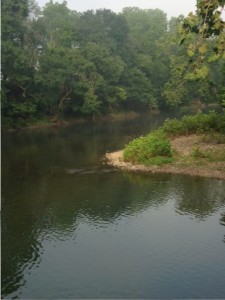
My short answer is, “Everywhere.” The somewhat longer answer is newspapers (especially news of the weird), magazines, tidbits on TV, conversations (overheard and otherwise), photos, books, life events (mine and others’), obituaries—i.e., everywhere. I tend toward the dark and the odd.
The recent blooming of a corpse flower at the Denver Botanic Gardens reminds me of my story “Bunga Bangkai” in Different Drummer. All of the stories in that collection are weird, but this one is extremely exotic and esoteric. It started when I came across a news story about a corpse flower blooming in the University of Connecticut greenhouses at about the same time that I somewhere heard or read the phrase “garden of heads.” The result was magical realism, with touches of animism and number symbolism—a story of the search for lost love and reconnection. Here are the opening paragraphs:
I came to The Huntington Botanical Garden to assist at the blooming of the Amorphophallus titanium—the huge shapeless penis. The other botanists here call him Johnson, or sometimes Titan arum, but I prefer to call him Bunga Bangkai, his name in our native Sumatra. Bunga Bangkai is wondrous. In bloom, the spadix—the penis—is fleshy and red, cloaked by a frilly-edged, leafy spathe (or petal) the shape of an upturned fluted bell, pale green on the outside and burgundy velvet on the inside. He resembles his distant cousins the Calla lily, skunk cabbage, and jack-in-the-pulpit, except that the bloom of Bunga Bangkai is three feet across and six feet tall—nearly eight feet if his potato-like corm is included in the measure. This Bunga Bangkai’s corm–his tuber—looks like a water chestnut and is the size of a small curled-up child.
For this blooming, I have tended Bunga Bangkai since his bud tip first pierced the earth, nearly three weeks ago. He has grown six inches a day and his bloom-time is near. Two weeks ago, we carried him from the conservatory to the garden, to share this rare spectacle with the people. More than four thousand come each day. At home in Sumatra, he would bloom every year. But here, it will be at least three years before he blooms again. Since his immigration in 1935, fewer than a dozen bloomings have graced the United States.
Funny, but reading that story now, I realize that there are ever more corpse flowers blooming in the U.S. and abroad—which I find very gratifying!
View amazing photos of the corpse flower on Denver Botanic Gardens Facebook Page. Visit the Denver Botanic Gardens website and view the flower on the stinky cam.
Read more from Different Drummer or purchase for the Nook or Kindle.






